The building and construction industry is known for generating significant waste.
Many materials used, like chemicals from fossil fuels, vast amounts of timber, and quarried stone, are far from eco-friendly.
Fortunately, the industry has started to recognise its environmental impact. New practices like carbon offsetting, comprehensive recycling, and using materials from renewable and sustainable sources are becoming more common.
This is now also the case for the common paint brush, which surprisingly generates significant waste globally, read on to find out more.
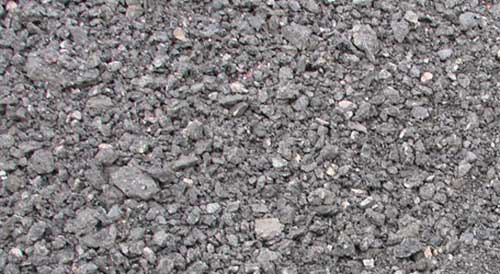
Recycled aggregate
What’s the Problem with Painting and Decorating?
The painting and decorating sector of the construction industry is notorious for its lack of eco-friendliness.
This is due to the high use of VOCs (volatile organic compounds) in paints, varnishes, stains, strippers, caulks, fillers, and significant waste production.
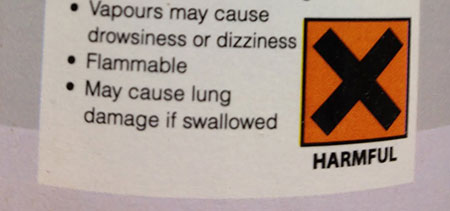
Warning label on can of paint
A major concern is the disposal of paint brushes and rollers. In the UK, over 35 million paint brushes are discarded annually, amounting to 95,000 daily. These brushes contribute over 45 tonnes of eco-damaging waste that takes up to 450 years to decompose.
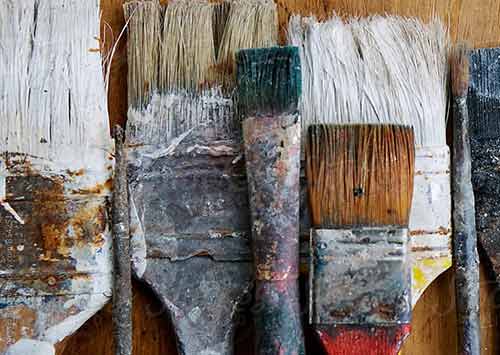
Old waste paint brushes
In the US and Canada, the problem is even more severe, with over 300 million paint brushes discarded annually.
The issue extends beyond brushes. In the UK, around 80 million litres of paint are disposed of yearly, often containing higher VOC levels than newer paints. Shockingly, after the motor industry, the paint industry is the second-largest producer of VOCs released into the air.
What’s the Solution to the Paint Problem?
To address the paint issue, start by buying only what you need. Paints come with coverage rates, so you can easily calculate the required amount and avoid excess.
Recycling paint is challenging because standard recycling channels don’t accept it. Only specialist companies can handle paint recycling, and they are few and far between.
If you have leftover paint, contact the supplier to see if you can return it. Most suppliers will accept returns if the paint is unopened.
If the paint is already opened, consider donating it to the Community RePaint scheme. This program collects unwanted paint and redistributes it to those in need for a small fee. It’s also a great option if you need to purchase paint.

The Community RePaint scheme for recycling paint
Finally, opt for eco-friendly paints that don’t contain harmful chemicals or VOCs. For more information, check out our guide on green and eco-friendly paints.
What can we do About the Paint Brush Problem?
So, how can we reduce the massive number of paint brushes and rollers discarded each year?
Clean Paint Brushes After Use
Instead of discarding your paint brushes, clean them thoroughly after use. Wash them well, dry them, and store them for future projects. See our guide on cleaning paint brushes for more tips.
Traditionally, cleaners like white spirit, methylated spirit, and acetate are used, but they are harmful to the environment.
Fortunately, there are now eco-friendly paint brush cleaners available. These are effective and can be found online and in most large DIY stores.
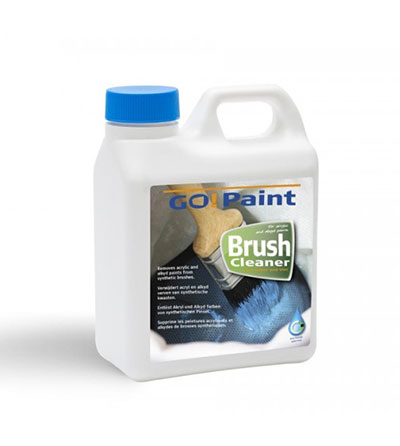
Eco friendly paint brush cleaner
Use Eco-Friendly Paint Brushes
When buying paint brushes or rollers, consider choosing eco-friendly options instead of standard packs from your local store. Many companies now offer paint brushes, rollers, paint trays, and other tools made from eco-friendly or renewable materials.
It’s important to know what these tools are made from to ensure their environmental benefits. Common eco-friendly materials include corn or cornstarch, bamboo, and animal hair.
Corn or Cornstarch
Corn is a versatile material commonly used in making painting tools. While primarily grown as a food source worldwide, corn also serves many other purposes.
Corn grows quickly, maturing from germination to harvest in about 60 days under optimal conditions. It is highly biodegradable, decomposing rapidly and ensuring a minimal ecological footprint.
Typically, corn-based paint brushes feature corn handles and a blend of natural and synthetic bristles. Though synthetic fibres do have some environmental impact, their small quantity minimises this effect.
For a fully eco-friendly option, choose corn brushes with recycled steel ferrules, which hold the bristles to the brush.
Always clean and reuse your paint brushes when possible. If a corn-based brush is discarded, it will biodegrade efficiently.
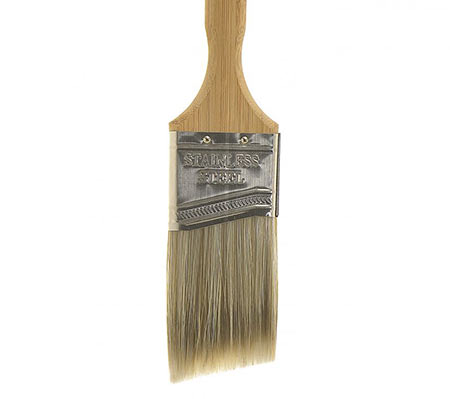
Corn based eco-friendly paint brush
Bamboo
Bamboo is another excellent material for making paint brushes, ranking high in eco-friendliness.
Bamboo requires minimal care, maintenance, and water. It can grow up to four feet in a day under optimal conditions and produces 20 times more material than trees over its lifetime.
Harvesting bamboo doesn’t cause soil erosion, as the roots remain in the ground. Additionally, bamboo absorbs large amounts of carbon dioxide and produces 35% more oxygen than most trees.
For paint brushes, bamboo is often used for handles due to its toughness and durability. Even when discarded, bamboo biodegrades without harming the environment.
For a fully eco-friendly brush, choose ones with recycled ferrules and, if possible, recycled bristles.
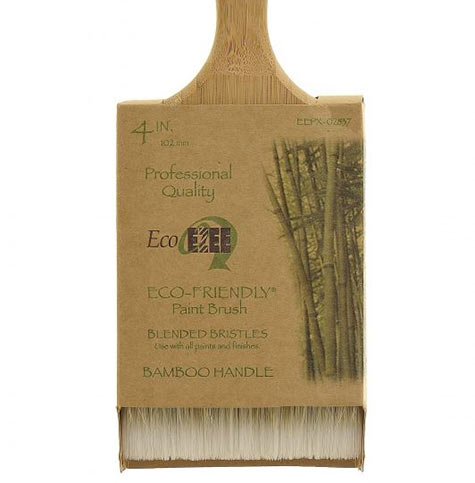
Bamboo paint brush
Animal Hair
Traditionally, paint brush bristles were crafted from animal hair like hog, pig, boar, or badger hair, offering a soft texture for a smooth finish.
However, as demand increased, mass production required commercial farming of animals, leading to ethical concerns.
When selecting brushes, consider not only sustainable or recyclable materials for the body but also the origin of the bristles.
Remember, after painting, clean your brushes thoroughly for reuse.
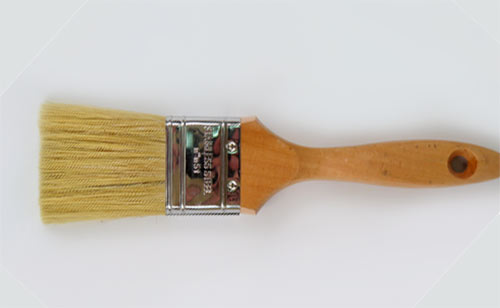
Animal hair paint brush
Where to Find Eco-Friendly Paint Brushes
With environmental concerns in the spotlight, both consumers and businesses seek to adopt eco-friendly practices. Many builders’ merchants and DIY stores now offer products made from recycled or sustainable materials. Ask staff about eco-friendly alternatives.
For purchasing eco-friendly paint brushes, consider these online outlets:
- Little Knights – Offers eco-friendly paint brushes, rollers, and trays.
- Monarch Painting – Supplies biodegradable paint brush sets.
- Homebase – Stocks a variety of bio-degradable paint brushes.
Many companies also ensure their packaging is biodegradable and environmentally sustainable, using recycled or biodegradable materials and eco-friendly printing methods with vegetable or soy-based inks.
Alternatives to Traditional Paint Brushes
Aside form the options listed above, today, there are some other alternativs to paint brushes that can be used, that not only helps to reduce wastage by not using traditional or eco-friendly brushes, but can also offer different textures and finishes. Some popular alternatives are as follows:
Paint Rollers
Paint rollers are excellent for covering large, flat surfaces quickly and evenly. They come in various sizes and materials, making them suitable for different types of paints and finishes.
Foam rollers provide a smooth finish, ideal for walls and ceilings, while textured rollers can add a decorative touch.
Using a roller can significantly reduce painting time compared to traditional brushes.
If you would like to learn more, see our paint rollers project.
Paint Sprayers
Paint sprayers are perfect for achieving a professional, smooth finish on large surfaces or intricate pieces. They can be used for walls, furniture, cabinets, and more.
Sprayers work by atomising the paint, which ensures an even coat and eliminates brush strokes.
There are different types of sprayers, such as airless, HVLP (High Volume Low Pressure), and compressed air sprayers, each suited for specific tasks.
While paint sprayers require more setup and cleanup, their efficiency and finish quality often justify the effort.
Sponges
Sponges can create unique textures and effects that brushes cannot. They are particularly useful for faux finishes, such as sponging, rag-rolling, or creating a marble effect.
Natural sea sponges provide a more irregular texture, while synthetic sponges offer consistent patterns.
Sponges are also great for blending colours on a canvas or wall, adding depth and interest to your painting project.
Foam Brushes
Foam brushes are affordable alternatives to traditional brushes, making them ideal for small projects and touch-ups.
They are excellent for applying smooth, even coats of paint, varnish, or stain on flat surfaces. Foam brushes are also useful for painting trim, moldings, and other detailed work where precision is needed.
Painting Pads
Painting pads are designed for smooth, even application of paint on flat surfaces. They consist of a flat pad with a handle and a replaceable pad cover.
Painting pads can hold a large amount of paint, reducing the need for frequent reloading. They are great for painting walls, ceilings, and large furniture pieces, offering more control and less mess than rollers.
If you would like to find out more, check out our project on paint pads.
Edging Tools
Edging tools, such as paint edgers and trim guides, are designed to create clean, straight lines along edges and corners.
These tools are particularly useful for painting around windows, doors, and ceilings without the need for masking tape. They help achieve professional-looking results quickly and with less effort.
While eco-friendly paint brushes often come with a higher price tag, don’t let that sway your decision. With proper care, washing, and storage after each use, they can last for many years.

